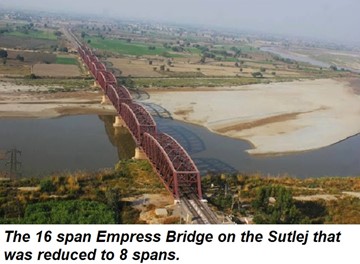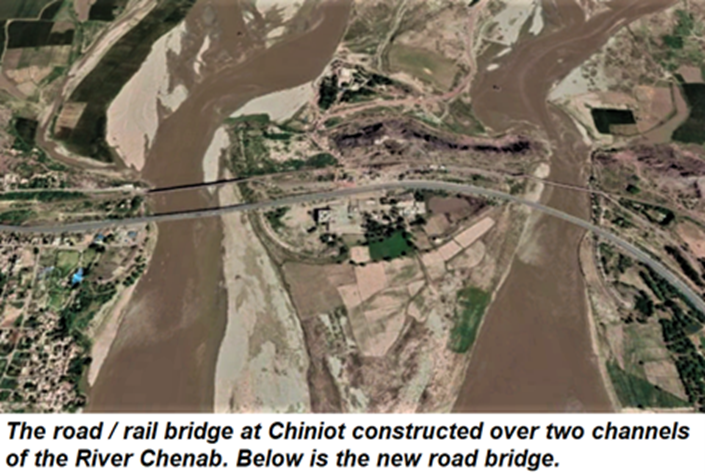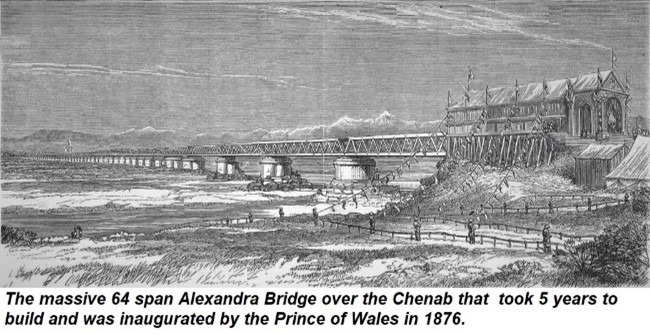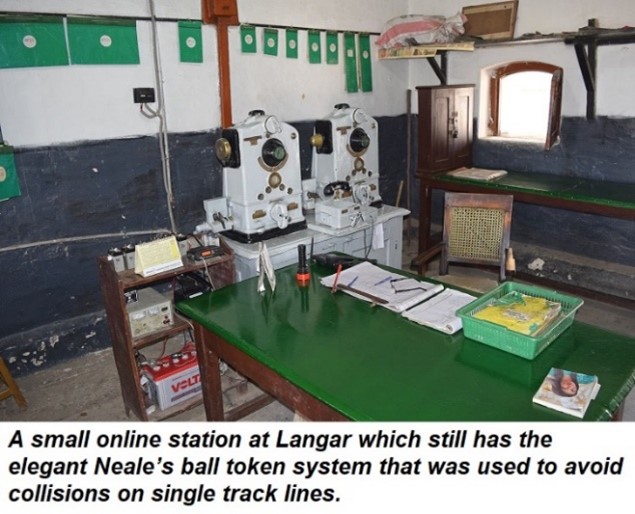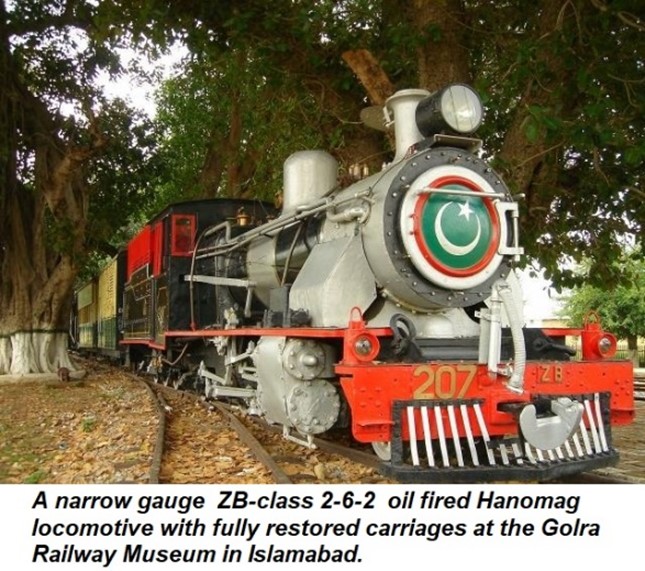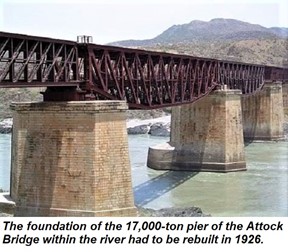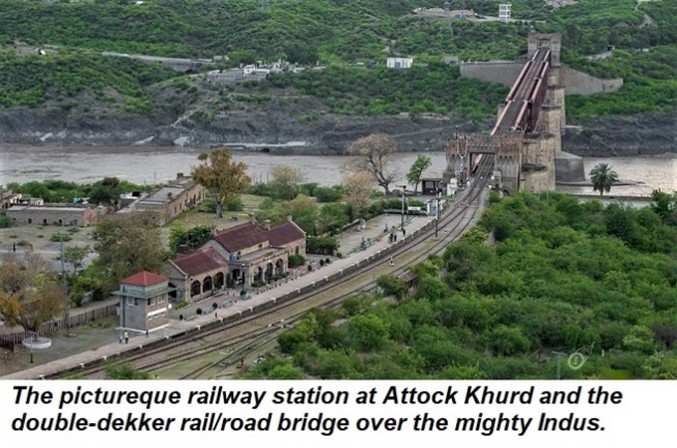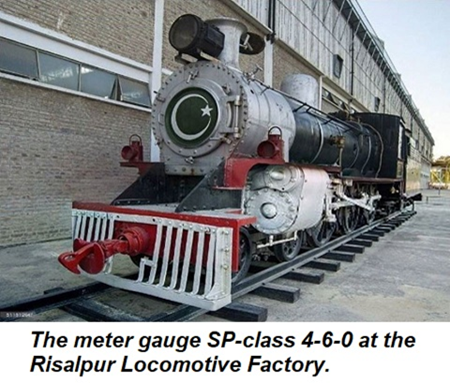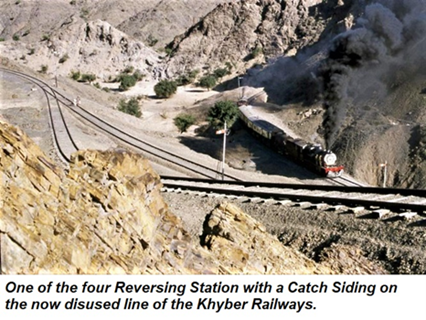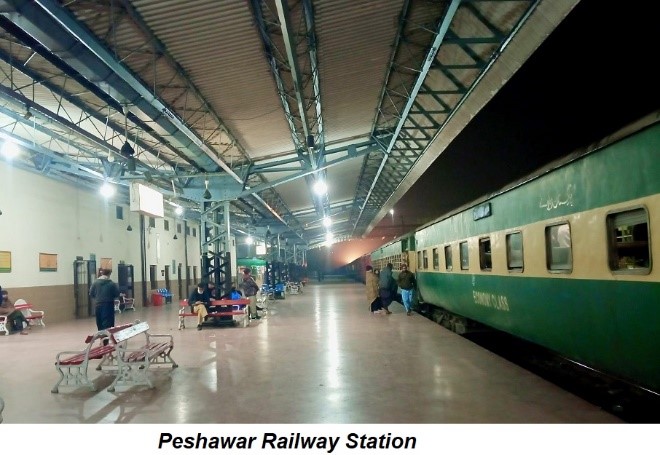Railway Tour – Couplings to the Khyber
Adding item to wishlist requires an account
Don't have an account? Create one.
Book Now
Tour Details
We invite you on a tour with an appeal for railway enthusiasts, civil engineers and Raj buffs. It takes you from central Pakistan all the way to the far end of the Khyber Pass along the bridge and rail network of the North Western Railways of British India. Though a lot of it was constructed over a 100 years ago, much of it is still in use and to the credit of the Pakistan Railways, well-preserved.
Departure & Return Location
Lahore – Lahore
Departure Time
11:30PM
Price Includes
- ✔ Pick & Drop
- ✔ Dedicated Driver with Private Grand Cabin
- ✔ 2 Quality meals per day
- ✔ Tour Guide
- ✔ Fuel for Vehicle Covered in Tour Plan
- ✔ Jeep Ride
- ✔ All Toll and Taxes included
Price Excludes
-
- ✖ Any item not mentioned above
- ✖ Lunch
- ✖ Medication, evacuation and rescue etc. in emergencies
- ✖ Personal insurances of clients
- ✖ Laundry & phone calls or other expenses of personal.
Itinerary
Day 1:(Arrival)
- Overnight flight to Lahore where our staff will welcome you for a well-planned and interesting tour and take you to your hotel to rest and freshen up. In the evening you will be invited to a welcome BBQ dinner at Lahore’s famous Food Street during which the tour manager will discuss with you the program for the next 10 days.

Day 2:(Lahore)
- Our day commences a visit to the headquarters of the Pakistan Railways where you will be briefed about its 150 years’ history. Within its premises is a narrow-gauge steam locomotive G-class 2-8-2 Number 57 NB 21083/15 which ran for the Zhob Valley Railway in Balochistan. It was built by North British Locomotive Company in 1908. The next destination is the Railway Workshop, Mughalpura. It was established for the North Western Railways (NWR) in 1904 and at Independence, it was the only state-of-the-art workshop of the Pakistan Railways. Preserved at the workshop is the oldest surviving locomotive in Pakistan. Named the ‘Eagle’, it is a narrow-gauge KS class 0-4-2 locomotive Number 152, originally of the Indus Valley State Railway and subsequently the Scinde, Punjab, and Delhi Railway.

Day 3:(Old city of Lahore and to Multan)
- In the morning, we will venture out to see the sites of the historic city of Lahore. You will visit the Lahore Museum whose first curator was John Lockwood Kipling, the father of the famous author Rudyard Kipling. and explore the complex of the Lahore Fort and Badshahi Mosque constructed during the 15th and 16th centuries by the Mughal emperors.
We will checkout after an early lunch and head for a tour of the Lahore Railway Station. It was constructed shortly after the revolt of 1857 and therefore built in the style of a medieval castle with thick walls, turrets, and loop holes to fire weapons. In the forecourt of the Station stands a narrow-gauge (2’6”) ZB-class 2-6-2, Number 205 built by Hanomag in 1932. At 16:30 we will catch the Karachi Express which will arrive at Multan at 21:15 pm where we will be staying for two nights.

Day 4:(Multan to Bahawalpur & back)
- Departing after an early breakfast, in 1½ hours we will arrive at the Railway Bridge on River Sutlej near Bahawalpur. Constructed by the Indus Valley State Railway and inaugurated in 1887, Queen Victoria permitted it to be named the Empress Bridge.
 The original structure was 1400 meters long with 16 spans and like earliest bridges in the north of India, it was designed as a level-crossing bridge with a buckle plate floor carrying road metaling for bullock carts. In fact, soon after completion, it was traversed by the Kandahar Field Force during the Second Afghan War. After observing the regime of the river for 40 years, it was decided to construct embankments and reduce the spans by half. The surplus spans were used to construct bridges over the River Ravi linking Amritsar with Sialkot and over the Chenab at Chiniot. On the return journey we will briefly stop to visit the station of the Lodhran Junction which was constructed in 1885.
The original structure was 1400 meters long with 16 spans and like earliest bridges in the north of India, it was designed as a level-crossing bridge with a buckle plate floor carrying road metaling for bullock carts. In fact, soon after completion, it was traversed by the Kandahar Field Force during the Second Afghan War. After observing the regime of the river for 40 years, it was decided to construct embankments and reduce the spans by half. The surplus spans were used to construct bridges over the River Ravi linking Amritsar with Sialkot and over the Chenab at Chiniot. On the return journey we will briefly stop to visit the station of the Lodhran Junction which was constructed in 1885. A 1½ hour drive will bring us to the one-kilometer-long double decker road / rail bridge over the River Chenab near Sher Shah which was constructed in 1890. Multan is an ancient city and our visit would be incomplete if we didn’t tour the Multan Citadel in the evening which was besieged by Alexander the Great, and in more recent times by the armies of the Sikhs and British India. Dinner will be at a Food Court of a shopping mall where you can pick the cuisine of your choice.
A 1½ hour drive will bring us to the one-kilometer-long double decker road / rail bridge over the River Chenab near Sher Shah which was constructed in 1890. Multan is an ancient city and our visit would be incomplete if we didn’t tour the Multan Citadel in the evening which was besieged by Alexander the Great, and in more recent times by the armies of the Sikhs and British India. Dinner will be at a Food Court of a shopping mall where you can pick the cuisine of your choice.
Day 5:(Multan to Jhang, Chiniot & Faisalabad)
- The early part of today’s journey is mostly on a motorway which takes us through the heartland of agricultural Punjab to another bridge over the River Chenab. The 750 meters’ single deck road / rail Riwaz Bridge
 is located ahead of Jhang and was constructed in 1904 with 11 spans each of 200 feet. We will then drive to the Industrial city of Faisalabad where after checking into our hotel and a quick lunch, we will go and see our third bridge over the Chenab. It is at Chiniot and of the same design as the one we saw the day before with a roadway above the train track. However, it has an unusual configuration i.e. the engineers constructed it in two parts using a limestone hill that partitioned the river. The bridge over the east channel has 3 spans while the west channel has 4 spans all approximately 200-feet-long. This was the last of the bridges over the Chenab and constructed in 1927 with its seven spans coming from the Empress Bridge when it was shortened. We shall return to our hotel in time for a quiet dinner.
is located ahead of Jhang and was constructed in 1904 with 11 spans each of 200 feet. We will then drive to the Industrial city of Faisalabad where after checking into our hotel and a quick lunch, we will go and see our third bridge over the Chenab. It is at Chiniot and of the same design as the one we saw the day before with a roadway above the train track. However, it has an unusual configuration i.e. the engineers constructed it in two parts using a limestone hill that partitioned the river. The bridge over the east channel has 3 spans while the west channel has 4 spans all approximately 200-feet-long. This was the last of the bridges over the Chenab and constructed in 1927 with its seven spans coming from the Empress Bridge when it was shortened. We shall return to our hotel in time for a quiet dinner.
Day 6:(Faislabad to Rawalpindi via Wazirabad and Jhelum)
- The Grand Trunk (GT) Road was the main artery through the Punjab and NWFP to the Khyber Pass and the lines of the Punjab Northern State Railway (PNSR) which was owned and sponsored by the government developed in parallel to it. To extend the line from Lahore northwards, between 1871 and 1876, the PNSR bridged three rivers: Ravi, Chenab and Jhelum. They were initially built for the meter gauge but converted to the 5’6” broad gauge in 1878. Today we will tour the upper two and first head for Wazirabad Railway Junction and the bridge on the Chenab whose first brick was laid on in November 1871. It was inaugurated by HRH George Albert (Berti), the Prince of Wales in January 1876 who ‘graciously consented for it to be named the Alexandra Bridge after his consort’. Coincidently only 70 km to the north a king with a similar name i.e. Alexander fought a battle two millenniums earlier. During monsoons, the Chenab spread 3½ miles and the original bridge had 64 spans with 3 wells sunk for each pier. It was one of the longest bridges in India but like the Empress Bridge its length was reduced first to 28 spans and subsequently to 17 and the surplus girders were used to strengthen the structure and construct a road bridge. After eating a packed lunch sitting on the bridge, a short drive of an hour will bring us to the mile-long bridge over the River Jhelum whose construction commenced around the same time as the Alexandra Bridge. It was less problematic as the river is confined between low ranges of hills.
 However, the design of the bridge was faulty and it could not take the weight of heavier loads. Fortunately, the piers had been erected to take a double track bridge and in 1893, the old spans were shifted to the downstream side and new superstructure was placed on the upstream side. The downstream spans were subsequently decked for a roadway. Thirty years later the entire structure was re-strengthened through a marvelous engineering process that allowed no disruption in the running of trains. As we cross the Salt Range on our way to the Garrison Town of Rawalpindi, time permitting we will visit the small station at Sohawa which is like one of the hundreds that were constructed by the PNSR.
However, the design of the bridge was faulty and it could not take the weight of heavier loads. Fortunately, the piers had been erected to take a double track bridge and in 1893, the old spans were shifted to the downstream side and new superstructure was placed on the upstream side. The downstream spans were subsequently decked for a roadway. Thirty years later the entire structure was re-strengthened through a marvelous engineering process that allowed no disruption in the running of trains. As we cross the Salt Range on our way to the Garrison Town of Rawalpindi, time permitting we will visit the small station at Sohawa which is like one of the hundreds that were constructed by the PNSR.
Day 7:(Khushalgarh Bridge)
- Next on our destination list is the Khushal Garh Bridge over the mighty Indus 2 ½ hours away. Enroute we will stop a small online station at Langar which still has the elegant Neale’s ball token system that was used to avoid collisions on single track lines.
 When Kohat Cantonment was established in 1874, the roads to it from Peshawar and Dera Ismail Khan were often blocked by hostile tribes. A boat bridge and a steam powered cableway over the Indus at Khushal Garh (which collapsed within a year) were temporary solutions and in 1903 it was decided to construct a bridge. Bridging the 30 meters deep and 250 meters wide gorge of the Indus posed a very different set of conditions to those encountered on the rivers of the Punjab.
When Kohat Cantonment was established in 1874, the roads to it from Peshawar and Dera Ismail Khan were often blocked by hostile tribes. A boat bridge and a steam powered cableway over the Indus at Khushal Garh (which collapsed within a year) were temporary solutions and in 1903 it was decided to construct a bridge. Bridging the 30 meters deep and 250 meters wide gorge of the Indus posed a very different set of conditions to those encountered on the rivers of the Punjab. The width was too large for a single span but fortunately a headland jutted out from the eastern bank that was exposed in winter, on which a massive masonry pier was erected.The eastern span was an anchor span, rested on the pier and from it, a section was cantilevered out 32 meters and another cantilever of similar length was anchored in a cliff at the western end. Between the noses of the two cantilevers, a span of 80 meters was slung. The finished bridge therefore had only two spans – one of 144 meters and a second of 92 meters both resting in the middle on the large masonry pier. The substructure work including the pier and abutments was completed by the winter of 1905-6 and the main road / rail bridge was completed within two more years. We will return to Islamabasd intime for lunch and your afternoon is free to bargain-hunt at the handicraft shops in Islamabad. That evening you will be invited to dine with one of the historians who planned this tour – Maj Gen Syed Ali Hamid.
The width was too large for a single span but fortunately a headland jutted out from the eastern bank that was exposed in winter, on which a massive masonry pier was erected.The eastern span was an anchor span, rested on the pier and from it, a section was cantilevered out 32 meters and another cantilever of similar length was anchored in a cliff at the western end. Between the noses of the two cantilevers, a span of 80 meters was slung. The finished bridge therefore had only two spans – one of 144 meters and a second of 92 meters both resting in the middle on the large masonry pier. The substructure work including the pier and abutments was completed by the winter of 1905-6 and the main road / rail bridge was completed within two more years. We will return to Islamabasd intime for lunch and your afternoon is free to bargain-hunt at the handicraft shops in Islamabad. That evening you will be invited to dine with one of the historians who planned this tour – Maj Gen Syed Ali Hamid.
Day 8:(Rawalpindi to Attock, Risalpur and Peshawar)
- Today is one of the highlights of our tour – a morning on the Attock Safari Tourist Train. Our morning begins with a brief tour of the Rawalpindi Station which was constructed in 1881 when the railway line arrived.

 In its forecourt is another ZB Class 2-6-2, Number 203, built by Hanomag. The Safari Train departs at 08:30 am and stop for an hour at the Golra Railway Museum which is not limited to closed halls but is sited on a main line station with regular traffic. The eight beautiful banyan trees on the platform with their massive spread testify that it was established 140 years ago. Over 50% of the reviews on Trip Advisor rate it as excellent. Apart from artifacts that reflect the history of the railways over 150 years, there is a big yard where cranes, trolleys, saloons, locomotives, coaches and tracks are marshaled. The center piece is a beautifully restored 2′ 6”-gauge train with bogies, inspection cars, a horse box a brake van and with a G/S Class 2-8-2 Locomotive Number 64 in front and a ZB Class 2-6-2 Number 207 oil fired Hanomag at the end.
In its forecourt is another ZB Class 2-6-2, Number 203, built by Hanomag. The Safari Train departs at 08:30 am and stop for an hour at the Golra Railway Museum which is not limited to closed halls but is sited on a main line station with regular traffic. The eight beautiful banyan trees on the platform with their massive spread testify that it was established 140 years ago. Over 50% of the reviews on Trip Advisor rate it as excellent. Apart from artifacts that reflect the history of the railways over 150 years, there is a big yard where cranes, trolleys, saloons, locomotives, coaches and tracks are marshaled. The center piece is a beautifully restored 2′ 6”-gauge train with bogies, inspection cars, a horse box a brake van and with a G/S Class 2-8-2 Locomotive Number 64 in front and a ZB Class 2-6-2 Number 207 oil fired Hanomag at the end.
By 11:30 am we will arrive at our destination – the beautifully restored Attock Khurd Station on the southern side of the Attock Road / Rail Bridge.

25 years before the bridge at Khusal Garg, a road rail bridge had already spanned the river at Attock where the Indus enters the gorge. The setting of the bridge is quite spectacular. It was placed high to give sufficient headroom to flood waters and the large well-preserved Attock Fort of the Mughal era is only 2 km upstream. Since flood waters could rise over 20 meters, the site selected gave the rail/road bridge a headroom of 30 meters. The bridge had 5 spans with two of 95 meters the longest in India at that time. The main challenge was laying the foundation of the only pier in the river channel. It took a year to construct a coffer dam and the condition of the rock that was reveled at the bottom was alarming. It was badly honeycombed and deeply fissured but time was short and the area inside the coffer dam was filled with concrete.

The original piers were trestles of riveted wrought iron – considered better at withstanding earthquakes. In fact, shortly after its completion, a massive earthquake displaced the girders on the trestles by an inch but there was no damage and in 1883, the first locomotive passed over the bridge. In 1925, the two 95 meters’ spans were replaced, the other three strengthened and the trestles were encased in stone and masonry piers. However, when the bedrock of the pier in the water channel was exposed for a second time, the engineers again had a shock. The island had been badly eroded and half the trestle was resting on an overhang of a decaying rock. The railways were extremely fortunate that it had survived for so many years and a new foundation was constructed to support the massive 17,000-ton new pier. During the first monsoon after the bridge was repaired there were two massive floods in the Indus. If the foundation of the river pier had not been detected and repaired, the mighty Attock Bridge would certainly have been washed away.

Incase the Safari is cancelled, we will visit the same destinations by coach. From Attock Khurd we will drive by coach to our next destination – a tour of the Locomotive Factory at Risalpur which was established in 1993 for the manufacture and overhaul of locomotives. Within its premises is a SP-class 4-6-0 locomotive that ran on the meter gauge line at Mirpur Khas in Sindh. The next two nights we will be spending at a heritage hotel established in renovated barracks that brings back memories of the Raj days.
Day 9:(Khyber Pass and its railway)
- We set off to spend a day in the historic Khyber Pass, through which countless armies have marched over the centuries. Unfortunately, the weekly train no longer runs through the pass and the line is badly damaged but there are sufficient remains to see of the Khyber Railway which was constructed after the Third Afghan War of 1919 and completed in 1926. The total length of this railway line from Peshawar to Landikotal was 58 km with 13 railway stations and in its passage through the pass there were 4 reversing stations, 34 tunnels with a total length of 5 km and 92 bridges and culverts, none with a span longer than 3 meters.
 We will enter the pass past Shagai Fort and stop at the defile of Ali Masjid which is dominated by another fort. This was the scene of the first battle of the Second Afghan War, 1878-80 and from here it’s half-an-hour drive to the historic Khyber Rifles mess at Ladikotal where we will have a traditional lunch while entertained by wild tribal dances. After freshening up at the Peshawar Club on our return, the historian Dr. Ali Jan, will take us on a fascinating tour of the Peshawar Heritage Trail followed by a farewell dinner at a restaurant that specializes in well-known Pathan local cuisine.
We will enter the pass past Shagai Fort and stop at the defile of Ali Masjid which is dominated by another fort. This was the scene of the first battle of the Second Afghan War, 1878-80 and from here it’s half-an-hour drive to the historic Khyber Rifles mess at Ladikotal where we will have a traditional lunch while entertained by wild tribal dances. After freshening up at the Peshawar Club on our return, the historian Dr. Ali Jan, will take us on a fascinating tour of the Peshawar Heritage Trail followed by a farewell dinner at a restaurant that specializes in well-known Pathan local cuisine.
Day 10:(Peshawar to Lahore)
- This is the final day of the tour and we will make an early morning departure at 06:00 am from the historic Peshawar Railway Station.
 Our express train will pass through very varied and interesting landscape. On the way you will have the pleasure of crossing the Indus, Jhelum and Chenab over some of the same bridges that you visited. The express will arrive in Lahore at 02:45 pm giving you sufficient time to catch your flight back home.
Our express train will pass through very varied and interesting landscape. On the way you will have the pleasure of crossing the Indus, Jhelum and Chenab over some of the same bridges that you visited. The express will arrive in Lahore at 02:45 pm giving you sufficient time to catch your flight back home.





